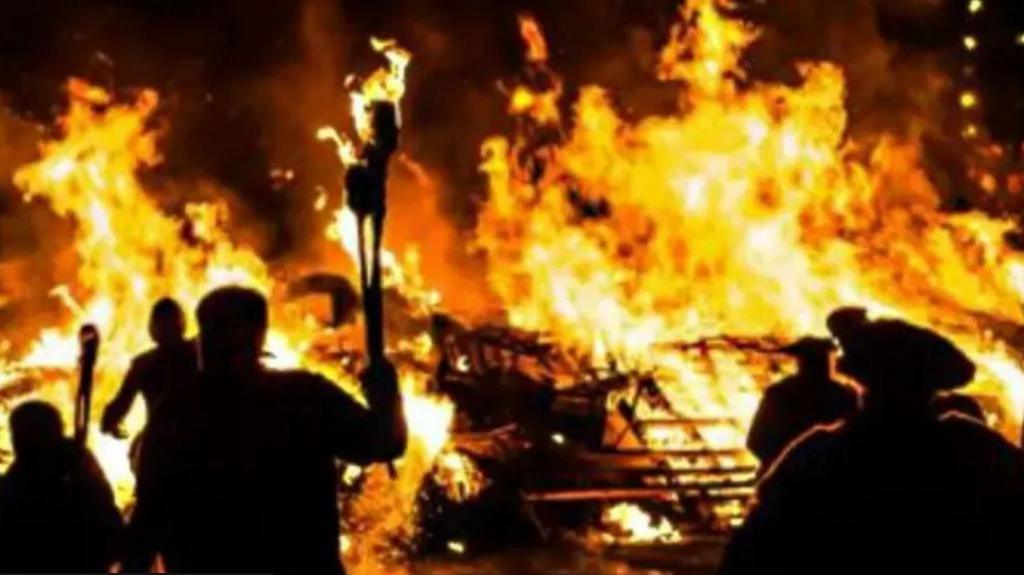Tens of thousands attend annual Lewes Bonfire
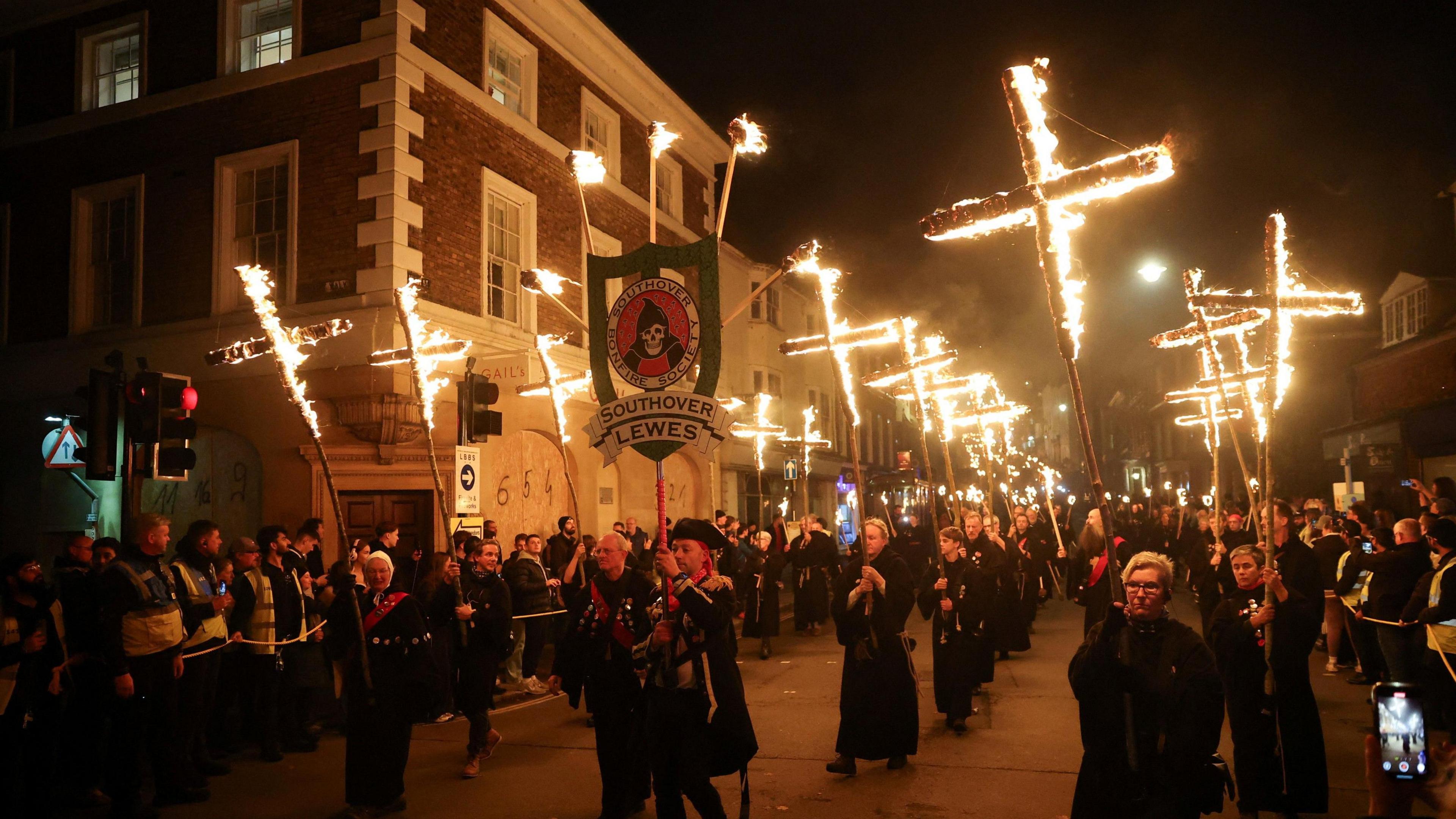
Burning crosses represent martyrs executed in Lewes during the reign of Mary I
- Published
Tens of thousands of people have gathered in Lewes for one of the country's biggest Bonfire Night events.
Local roads have been closed and rail services suspended, with visitors being asked to avoid the East Sussex town to avoid overcrowding its narrow streets.
In 2024 an estimated 40,000 people attended.
The parade sees effigies paraded through the town, climaxing in a huge bonfire and firework display.
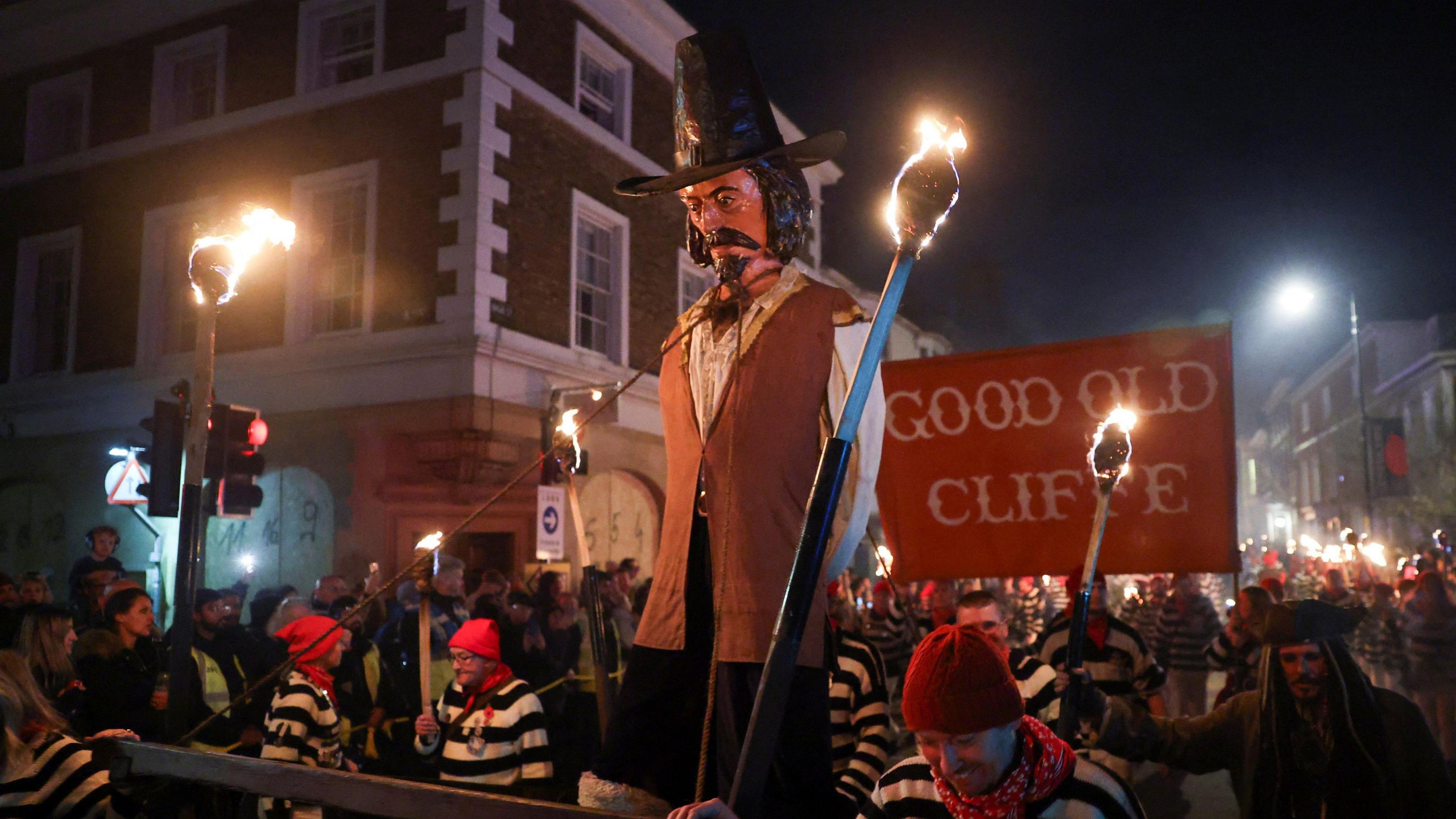
An effigy of Guy Fawkes is among those being paraded through the town
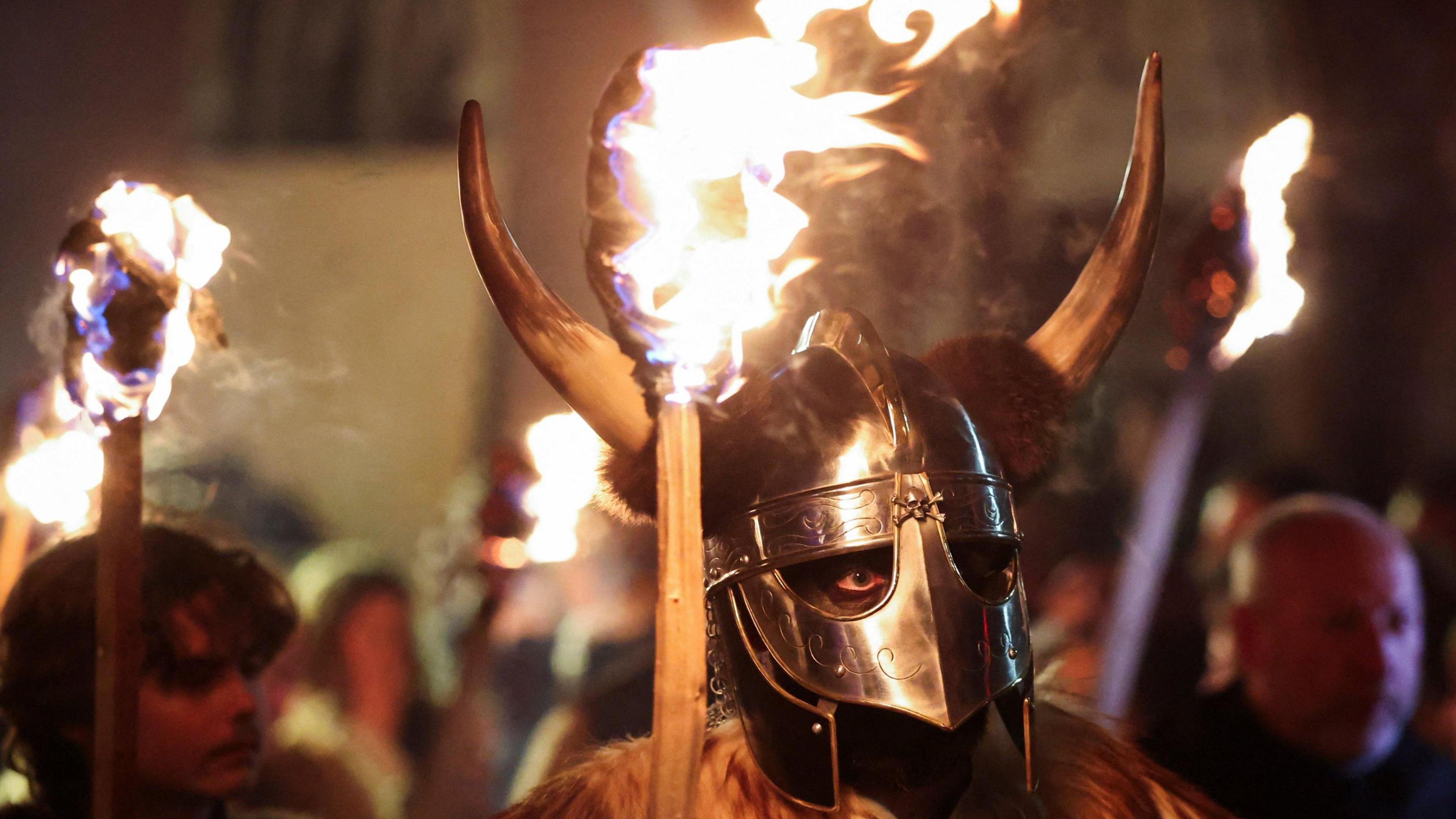
The parade is the biggest night in Lewes' calendar
Michael Symes, chairman of the Lewes Borough Bonfire Society, told BBC Radio Sussex planning for the event was almost a year-round task.
"We get fundraising again as soon as Christmas is over," he said. "We don't get any grants or support from any authorities.
"The actual work of getting all the bonfire stuff done starts in August and September."

Hundreds take part in the procession, watched by tens of thousands of people
"For Lewes it's a way of life, it means a huge amount to Lewesians," Mr Symes said.
"They're very proud of the bonfire and they're proud to be the capital of bonfire in Britain."
There was much anticipation ahead of the event every year over which public characters and events are depicted in effigies taking part in the parade.
Rail services are due to return to normal on Thursday morning.

Colourful costumes are an important part of the parade
Many of the town centre's businesses take precautions ahead of the parade, including boarding up windows.
Christal Lamb from Cafe Vegu said: "It's mostly just about people leaning quite heavily against the windows but lots of fireworks, lots of fire everywhere, you never know what's going to happen.
"Everyone in the High Street likes to take extra precaution to make sure everyone's super safe."
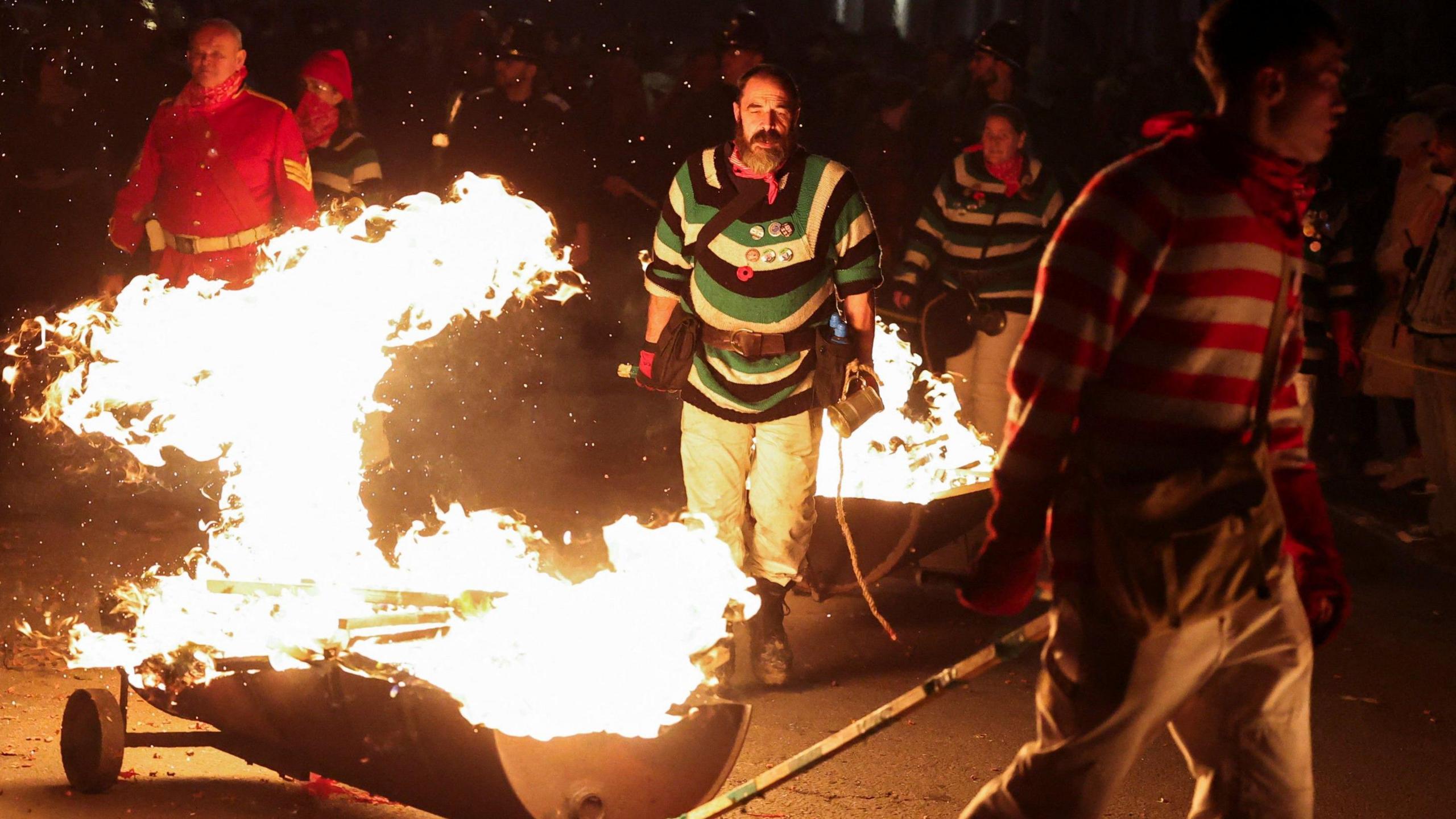
Bonfire societies from across Sussex take part in the parade
The event commemorates both the attempt to blow up the Houses of Parliament by Guy Fawkes and the other members of the Gunpowder Plot, and 17 Protestant martyrs burnt at the stake in the town during the reign of Mary I in the 16th Century.
The martyrs are represented by 17 burning crosses carried in the procession.
Follow BBC Sussex on Facebook, external, on X, external, and on Instagram, external. Send your story ideas to southeasttoday@bbc.co.uk , external or WhatsApp us on 08081 002250.
Related topics
- Published4 November
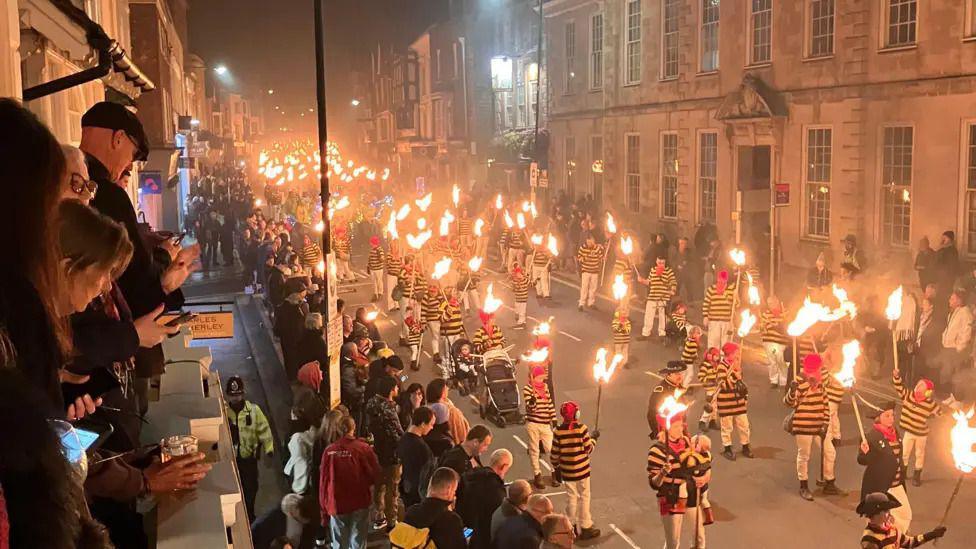
- Published6 November 2024
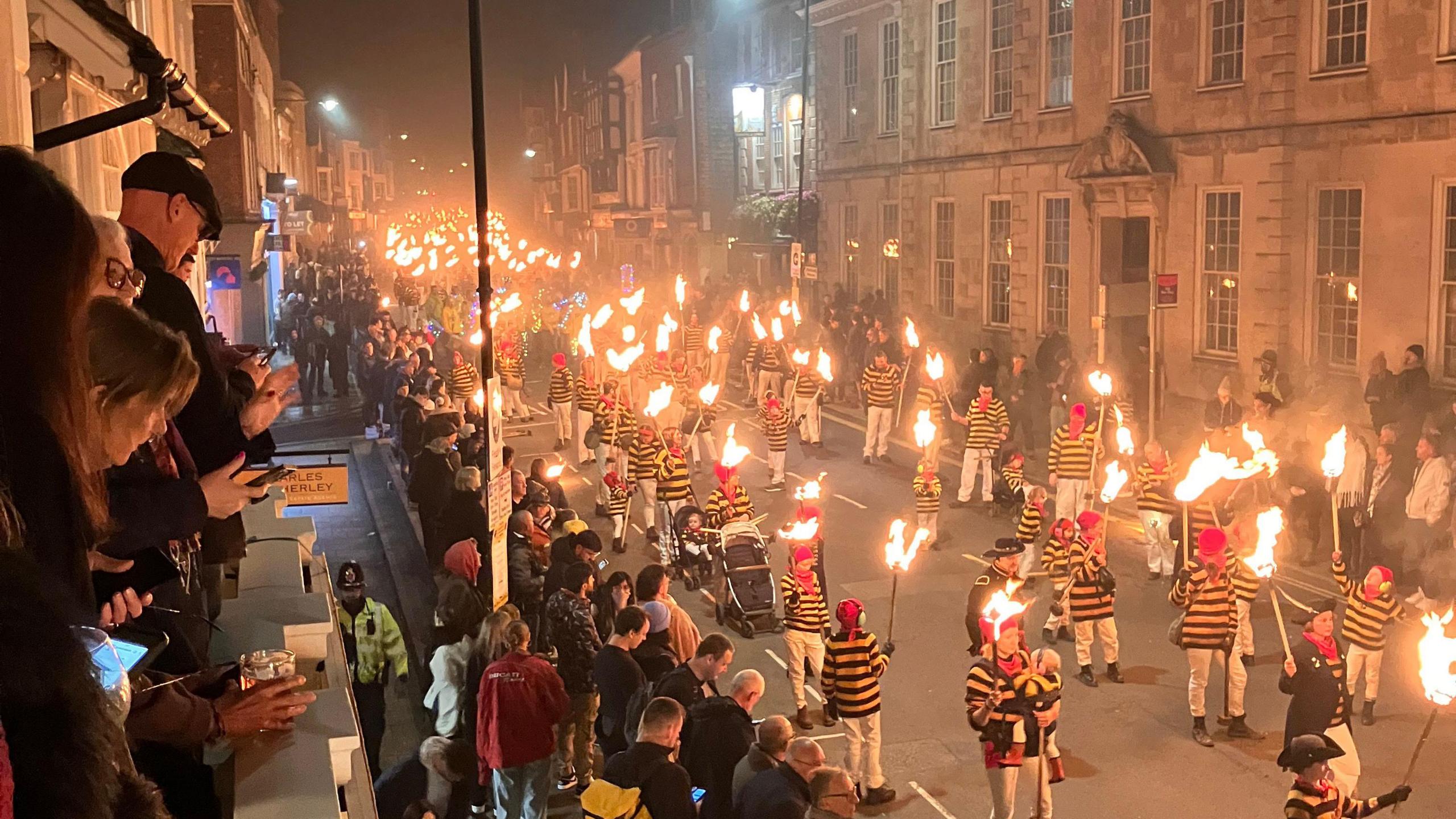
- Published18 October
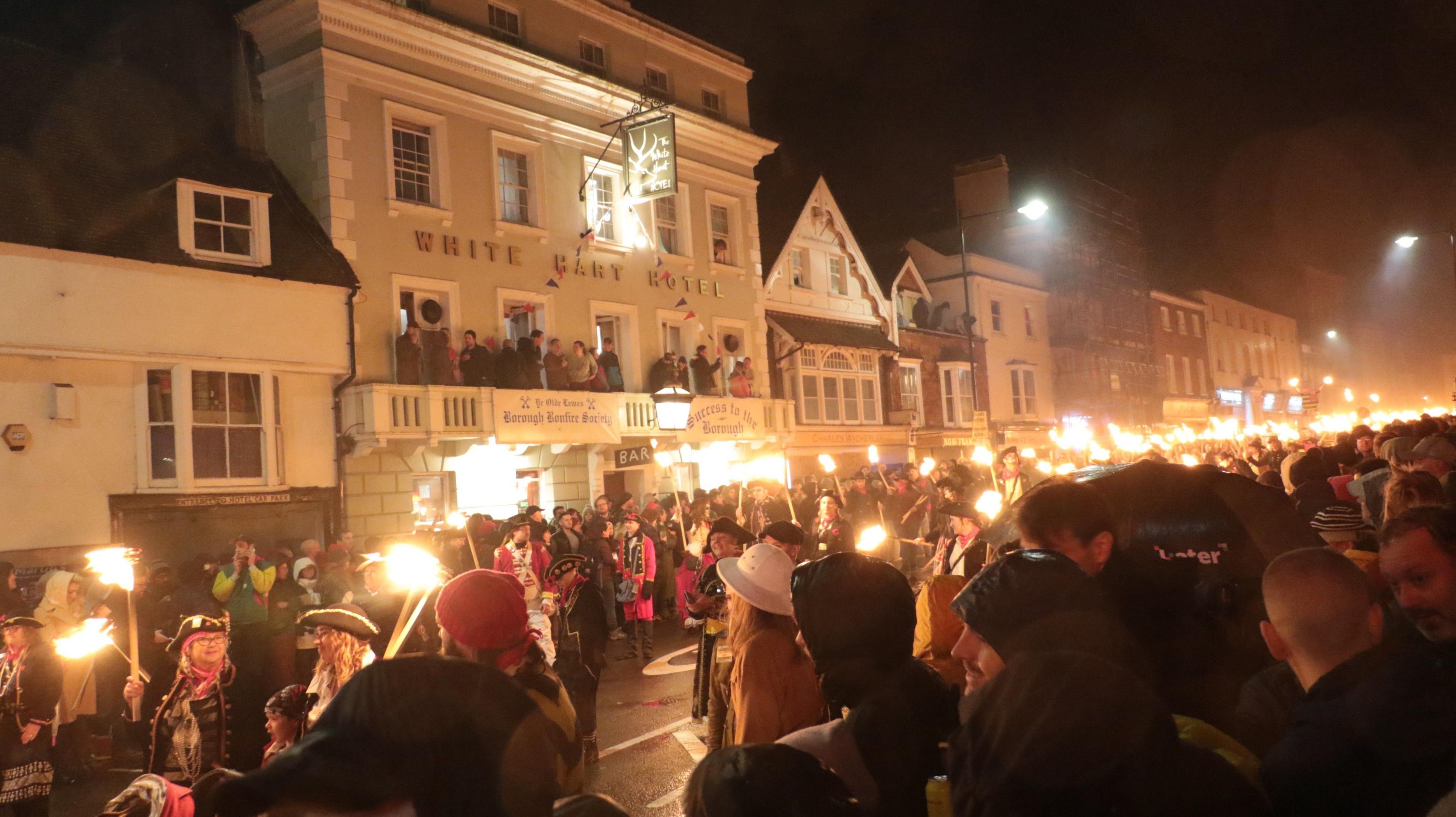
- Published5 November 2024

- Published1 November 2024
